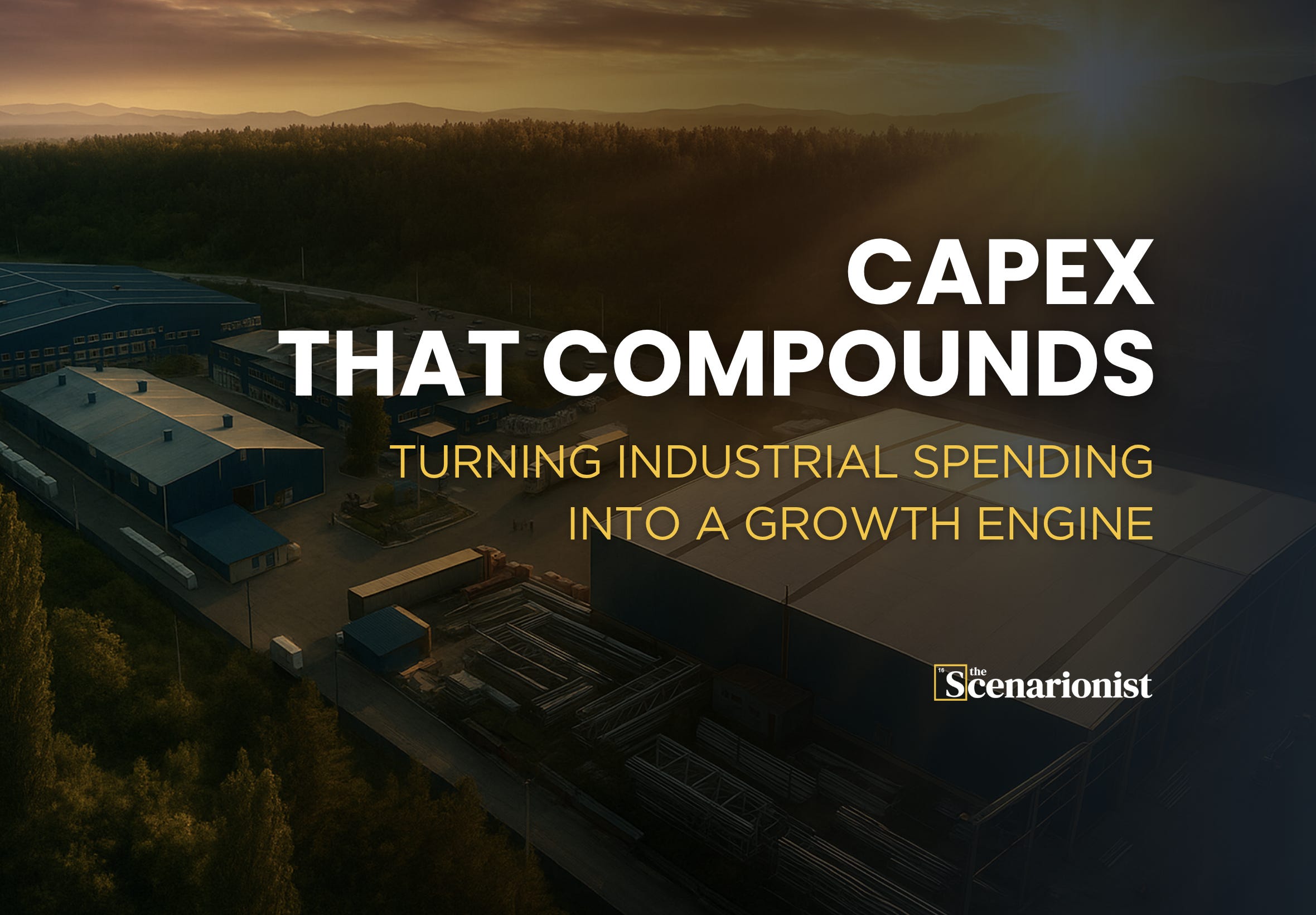Capex That Compounds: Turning Industrial Spending into a Growth Engine | The Scenarionist
A deep dive on case-driven strategies and tactics to turn a first-of-a-kind factory into a winning fleet, keeping future dollars as expansion dollars.
Turn industrial spending into an asset that pays you back. The moment your second unit is cheaper, faster, and lender-friendly, Capex flips from cost center to competitive advantage.
Deep tech startups face a harsh reality: moving from lab prototype to industrial scale isn’t just a bigger project – it’s a different universe.
Unlike software ventures, which can iterate rapidly and cheaply, deep tech companies must pour capital into physical infrastructure, supply chains, and hardware long before revenue flows [1].
This is the notorious “valley of death” in deep tech, where technology readiness alone isn’t enough, and the difference between success and failure comes down to strategy, financing structure, and execution precision [2].
In 2024, U.S. construction spending on new manufacturing facilities hit a record $238 billion – a sign of massive scale-up efforts underway – yet many of these projects will falter if their first Capex investments don’t pave the way for cheaper follow-ons.
For investors and founders, the first industrial asset (be it a pilot plant, production line or hardware rig) is often a make-or-break bet.
Get it wrong, and you burn through capital on a one-off facility that still leaves too many questions unanswered. Get it right, and every dollar after can go into replicating and scaling a proven design, rather than reinventing the wheel.
So, in today’s industrial build-out, most deep-tech companies don’t stall on physics—they stall on replication and financing. The first plant absorbs the capital; the second never gets cheaper.
This report dives into the strategies and tactics to flip that script—engineering and planning the first industrial asset so every subsequent unit is faster, cheaper, and genuinely lender-friendly.
We examine the engineering patterns (spec freeze, copy-exact boundaries, modular envelopes), the operational themes (instrumentation and ramp-up practices), and the capital stack that shifts spend from invention to replication.
We draw lessons from climate, energy, and advanced manufacturing teams that turned Plant #1 into a repeatable product—where they standardized and where they deliberately left room to learn.
By the end, you’ll have a grounded strategy to move from FOAK risk to NOAK economics and to recognize the conditions under which Capex truly becomes a growth engine.
1. First-of-a-Kind vs. Nth-of-a-Kind: The Power of the Learning Curve
Building something that’s never been built before is inherently expensive. A first-of-a-kind (FOAK) facility – whether it’s a fusion reactor, a battery recycling plant, or a biomanufacturing line – almost always costs far more than later copies of the same design. The reasons range from lack of scale economies to unforeseen engineering challenges.
But a well-known phenomenon in industrial technology offers hope: the learning curve. With each doubling of cumulative production, the unit cost of a new technology tends to fall by a constant percentage, known as the learning rate. Solar panels, for instance, have exhibited a ~20% cost reduction for every doubling of installed capacity, and lithium-ion batteries around an 18–19% reduction. In other words, the more you build, the cheaper and more efficient it gets to build the next one. This isn’t automatic magic – it’s the result of learning by doing, process improvements, and economies of scale.
The trick for deep tech startups is to harness this effect even at small scales. You want your FOAK project to generate the knowledge and processes that make your nth project cheaper by design.
Consider advanced nuclear reactors: the U.S. Department of Energy projects that repeat deployments (“Nth-of-a-kind”) of next-gen reactors could reduce capital costs by 40% compared to the prototype plant. That kind of cost decline can be transformational – turning an unviable project economics into a profitable venture – but it only happens if the lessons of the first build are captured and applied.
Yet history shows that cost declines are not guaranteed. In fact, an MIT study of nuclear plant construction found a sobering result: in some cases, nth-of-a-kind units were more expensive than the first, due largely to “soft” indirect factors.
Each new project had to relearn lessons or adapt to new local conditions, causing scope creep and design changes that erased expected savings. The takeaway? Standardization is key.
The MIT researchers concluded that sticking to a standardized design and avoiding site-specific redesigns is critical to realizing cost reduction – recommending strategies like offsite modular fabrication and assembling plants from factory-made subcomponents. If every new build is treated as a bespoke project, you forfeit the learning-curve benefits.
In contrast, look at industries that obsess over replication. The semiconductor sector offers a famous example: Intel’s “Copy Exactly!” strategy. Beginning in the 1980s, Intel perfected its chip fabrication process in one facility, then duplicated it precisely across its fabs worldwide [3][4].
Engineers would replicate even seemingly trivial variables – the type of floor tiles, the humidity and cleanroom protocols, even the color of workers’ gloves – to ensure that a fab in Arizona produced chips indistinguishable from those in Oregon [5][6]. This fanatic standardization paid off by eliminating



